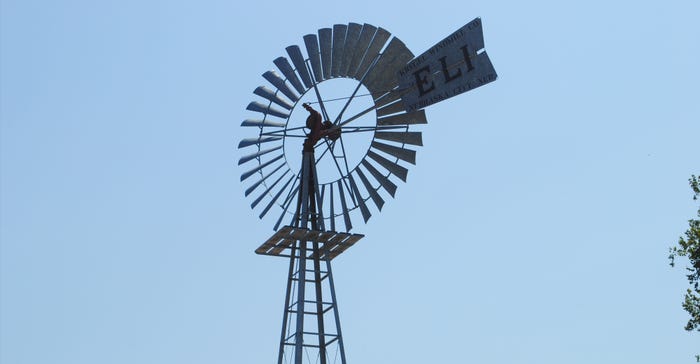
Walk into the Kregel Windmill Factory Museum on Central Avenue in Nebraska City, and you are transported back to 1923 at the factory’s peak.
The unique museum memorializes industrial history like nowhere else. Tools remain exactly the way they were when owner Art Kregel left for lunch on a fateful Friday in 1991. A Dempster gear box he was trying to repair remains in a vice, ready for Kregel to return to work.
Kregel went home to eat lunch, but he suffered a stroke before he could return. He died a few months later, ending a legacy of family manufacturing history that dated back to 1879.
Practically every Nebraska farmer and rancher in the early part of the 20th century relied on a windmill for pumping water. At one time, there were 1,000 windmill manufacturers in the country, but this is the only intact original windmill factory museum in the U.S.
It contains one of only 13 operable factory line shafts still in its original position found in the country. It is like a time capsule from the early 1900s, with tools still left on the worktables and penciled notes still left on Art’s desk. The safe is still open. Art’s coat hangs by his desk.
The Kregel family manufactured more than 2,000 Eli-brand windmills, with the last one being produced in 1983. After that, the shop was operated as a windmill and water pump repair shop. Not only did the family manufacture, build and repair windmills, but they also served the community as a general repair shop because of the tools and expertise they had.
The museum is the Kregel shop, with the production line and maintenance tools interpreted for visitors. The main attraction is the line shaft that ran the equipment, and it could still run today. Most of the manufacturing and repair tools date back a century or more, including the power shear, punch and riveting machine that dates to the late 1800s, and a metal-turning lathe that dates to 1860.
That’s why the Kregel legacy is so important to the history of agriculture, and it is also why this museum is significant in telling that story.
Cousins George and Louis Kregel began an agricultural manufacturing business across the street from the current factory museum in Nebraska City in 1879. Eventually, the company began building windmills that George developed.
The unique Kregel design was the basis for the famous Eli windmills made at the factory that opened in 1902. George named the windmills for a Lutheran pastor and family friend, Eli Hubbard. The windmills had an innovative direct stroke, self-oiling design and a ball-bearing swivel, built for low maintenance.
George died in 1946, and the business was taken over by his son, Art. George’s daughter, Ella, was a bookkeeper and secretary for the business until she died at work at her desk at age 79 in 1971.
Eli windmills manufactured at the factory were sold directly to farmers, mostly within a 50-mile radius. About 100 are known to be still operational. At its peak in 1923, the factory had six to eight employees and built 130 windmills.
During World War II, when steel was rationed, the company turned to repair and service. After Art died, the family turned the entire factory over to the Kimmel Foundation and Wirth Foundation for preservation. The facility operates as a 501(c)(3) nonprofit museum.
Learn more online at kregelwindmillfactorymuseum.org.
About the Author(s)
You May Also Like






